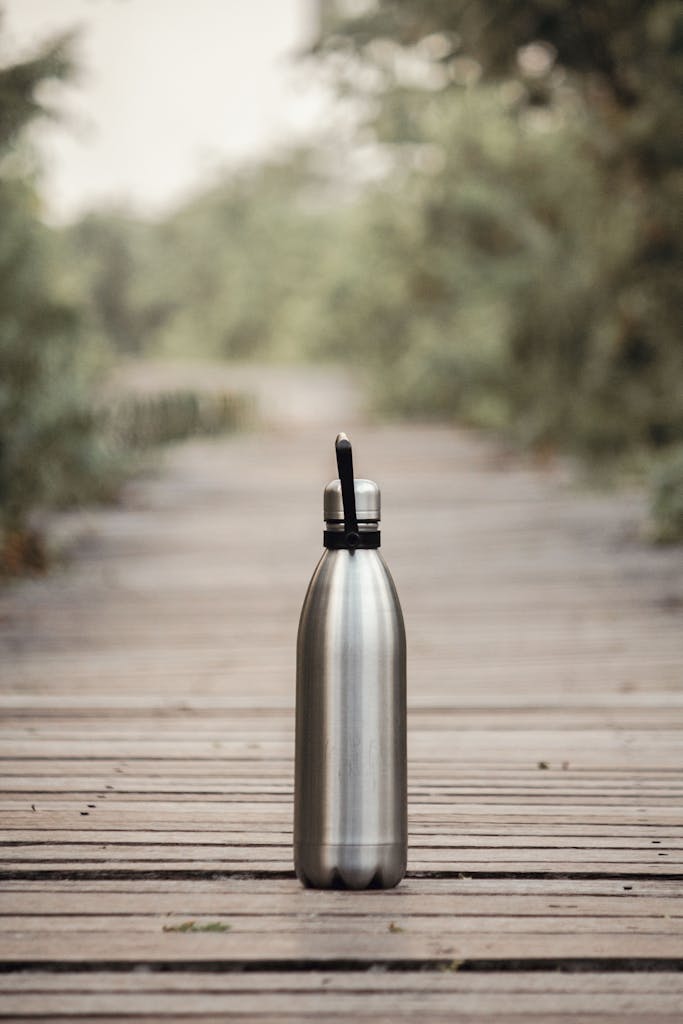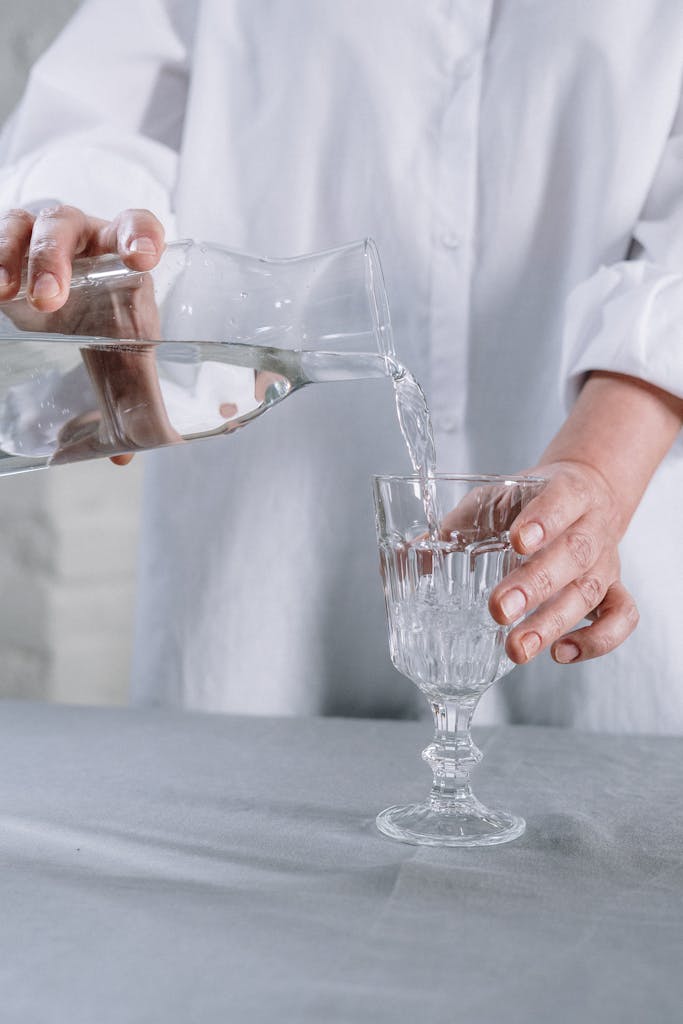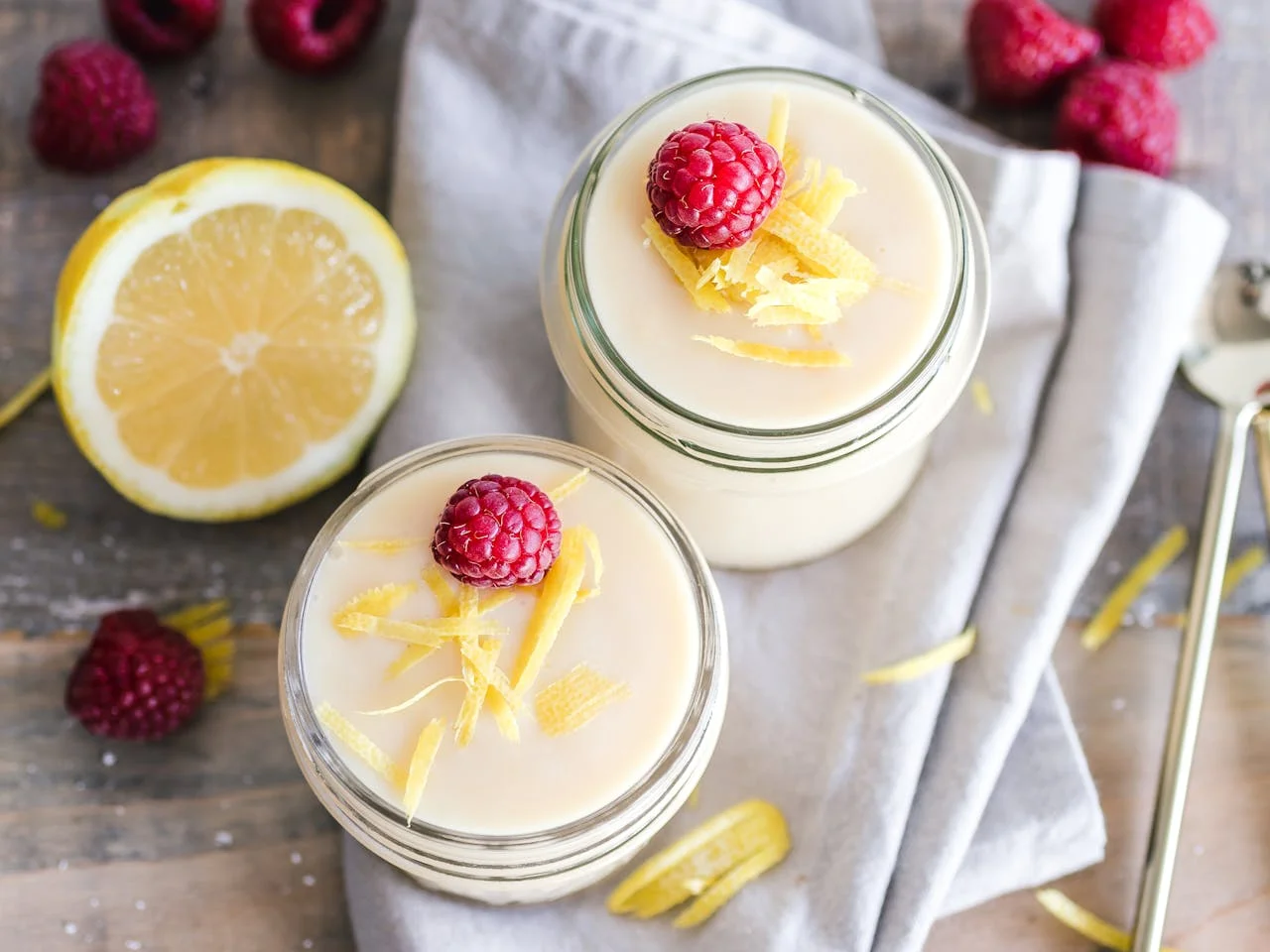
You’re probably thinking hydration’s only a summer concern, but here’s the thing – winter can dehydrate you just as quickly. I learned this the hard way last January when I felt exhausted for weeks, only to realize I’d been drinking half my usual water intake. Your body loses moisture through every breath in cold, dry air, plus you’re less likely to notice thirst when it’s chilly outside. The good news? There are simple tricks that’ll keep you properly hydrated without forcing down ice-cold water.
Key Takeaways
- Drink warm fluids like herbal tea, warm water with lemon, or broth throughout the day to maintain hydration.
- Monitor urine color as a hydration indicator and set daily water intake goals to track your progress.
- Consume water-rich foods such as soups, stews, broths, and fruits to boost your fluid intake naturally.
- Use hydration reminder apps, phone alarms, or smartwatch alerts to prompt regular water consumption throughout the day.
- Increase baseline fluid intake during physical activity by sipping fluids every 15-20 minutes and adding electrolyte drinks.
Drink Warm Fluids Throughout the Day
When winter rolls around, most of us think hydration becomes less important, but that’s actually when our bodies need extra attention. You’re breathing in that dry, cold air all day, which steals moisture from your system faster than you realize.
Here’s where warm fluids become your secret weapon for maintaining proper hydration.
I’ve learned that sipping herbal tea, warm water with lemon, or even simple broth throughout the day keeps my fluid intake consistent during cold weather. Let’s be honest – who wants to chug ice water when it’s freezing outside? Warm drinks feel more appealing and actually help raise your body temperature while replacing lost moisture. Make it a habit to carry a thermos and refill it 2-3 times daily for ideal hydration.
Consider making your hydration ritual part of your morning routine by starting each day with a warm cup of herbal tea or lemon water in a quiet, comfortable space.
Monitor Your Urine Color as a Hydration Indicator
Since you can’t exactly peek inside your body to check hydration levels, your urine becomes the most reliable indicator you’ve got. Think of it as your personal hydration dashboard – no fancy gadgets required.
Check your urine color multiple times throughout the day, because hydration status fluctuates constantly. Here’s your quick reference guide:
| Urine Color | Hydration Status |
|---|---|
| Clear/Pale Yellow | Well Hydrated |
| Light Yellow | Adequate |
| Dark Yellow | Mild Dehydration |
| Amber/Orange | Moderate Dehydration |
| Brown | Severe Dehydration |
Pay attention to frequency too. If you’re peeing small amounts regularly, you’re crushing the hydration game. Infrequent bathroom trips with large volumes? That’s your body waving a dehydration flag. This simple check beats waiting for thirst – your most powerful hydration tool costs absolutely nothing.
Proper hydration can also impact how often you wake up refreshed, as dehydration during sleep affects your body’s recovery processes.
Set Daily Water Intake Goals and Track Your Progress
Setting a daily water goal isn’t rocket science, but you’d be surprised how many of us wing it and wonder why we feel like dried-out houseplants by 3 PM. Start by calculating half your body weight in ounces—so if you’re 160 pounds, that’s 80 ounces daily—then bump it up if you’re active or dealing with dry indoor heating.
I’ve found that tracking my intake with a simple tally on my phone or a water bottle with measurement marks keeps me honest, because apparently my brain thinks two sips equals a full cup. If plain water feels monotonous during cooler months, try adding detox water combinations like cucumber and lemon or apple with cinnamon to make hydration more appealing and flavorful.
Calculate Personal Hydration Needs
One simple formula changed how I think about hydration: take your weight in pounds, divide it by two, and that’s your minimum daily fluid intake in ounces. If you weigh 150 pounds, you need at least 75 ounces of water daily. But here’s the thing – that’s just your starting point, not your finish line.
Your body’s actual needs depend on several factors I learned the hard way. Age, activity level, and health conditions all play a role in keeping you properly hydrated. I discovered that my desk job requires less fluid than my weekend hiking adventures, but both still demand attention to my intake.
The real game-changer? Stop treating hydration like a one-size-fits-all approach and start personalizing it to your lifestyle.
Monitor Daily Fluid Intake
Knowing your hydration needs is one thing, but actually hitting those targets day after day? That’s where the real challenge begins. You’ve got to become a tracking machine, and trust me, it’s easier than you think.
Start by grabbing a water bottle with measurement marks – your new best friend for counting cups of fluid per day. Whether you’re aiming for 11 cups as a woman or 16 as a man, mark your progress like you’re conquering territory. Use a hydration app, keep a written log, or simply move rubber bands down your bottle.
Here’s your secret weapon: check the color of your urine regularly. Pale yellow or clear means you’re crushing your daily water goals. Dark yellow? Time to step up your game, champion.
Keep a Water Bottle Within Reach at All Times

When you’re bundled up in layers and feeling perfectly cozy, drinking water probably feels about as appealing as eating ice cream in a snowstorm. But here’s your power move: keep that water bottle glued to your side like it’s your personal hydration sidekick. Cold weather and dry winter air are secretly stealing your fluid reserves, even when you’re not sweating buckets.
Set phone reminders every 30 minutes – trust me, you’ll forget otherwise. Grab an insulated bottle to keep water at a comfortable temperature, because nobody wants arctic-cold fluid when it’s already freezing outside. Make it stupidly easy by placing bottles everywhere: your desk, car, gym bag. Every time you spot a water fountain, refill immediately. This simple habit transforms you into a hydration machine, giving you the energy advantage you need. Use time management techniques like setting specific limits for water breaks to create a consistent routine that sticks throughout the colder months.
Add Natural Flavors to Plain Water
Plain water tastes about as exciting as watching paint dry, which explains why you’d rather reach for literally anything else when you’re thirsty. But here’s your power move: transform that boring H2O into something you’ll actually crave, especially when winter air tricks your body into ignoring its fluid needs.
Your taste buds deserve better than flavorless water that makes hydration feel like a chore instead of something you actually want.
Natural flavor infusions let you take control of your hydration game without surrendering to sugary drinks. I’ve discovered that fruits and vegetables can completely revolutionize plain water’s appeal:
- Slice cucumber and mint for a spa-like refresher that beats expensive bottled alternatives
- Drop frozen berries into your bottle for gradual flavor release throughout the day
- Combine watermelon chunks with basil for an unexpected taste combination
A reusable infuser bottle makes this strategy effortless, letting you experiment with different combinations until you find your perfect hydration formula. Just like how seasonal refresh ideas can revitalize your workspace, these natural infusions can completely transform your relationship with water.
Consume Water-Rich Foods Like Soups and Fruits
Beyond flavoring your water, you can actually eat your way to better hydration, and honestly, this approach feels like cheating the system in the best possible way. Winter’s dry air causes sneaky fluid loss, but water-rich foods become your secret weapon against dehydration.
I’ve discovered that soups, stews, and broths are hydration powerhouses—they’re fundamentally drinking water with benefits. One bowl can provide 8-12 ounces of fluid while filling you up. Fruits like watermelon, oranges, and grapes contain over 80% water, making them nature’s sports drinks. Vegetables such as cucumbers, celery, and tomatoes work similarly.
Last winter, I started adding these foods to every meal, and meeting my daily fluid needs became effortless. You’re intrinsically tricking yourself into staying hydrated while enjoying delicious food. Picture that juicy watermelon slice on a summer beach—it’s not just a refreshing treat, but a perfect example of how water-rich foods can keep you hydrated year-round.
Limit Caffeine and Alcohol Consumption
Although it sounds counterintuitive, your favorite warm beverages might actually be working against your hydration goals during cold weather. That cozy coffee or evening wine ritual? They’re secretly sabotaging your body’s fluid balance when you need it most.
Here’s what you need to master cold-weather hydration:
- Limit caffeine to 3 cups of coffee or tea daily – beyond that, you’re playing with dehydration fire
- Minimize alcohol consumption since it impairs your body’s temperature regulation when hypothermia risk peaks
- Switch to herbal teas and warm broths that actually support hydration instead of stealing it
I learned this lesson during a brutal Minnesota winter when my daily 5-cup coffee habit left me feeling dizzy and cold. Swapping two cups for chamomile tea made a noticeable difference within days.
Just like with the morning coffee strategy, if warm beverages bring you joy, keep them in moderation, but make smarter choices that align with your health goals.
Recognize Early Signs of Dehydration

When your body starts sending out distress signals, it’s not being dramatic – it’s literally crying for water. Your body loses fluids constantly in cold weather, but you’re less likely to notice the signs of dehydration when it’s chilly outside.
| Mild Signs | Serious Signs | Urine Indicators |
|---|---|---|
| Fatigue | Nausea | Dark yellow color |
| Loss of appetite | Headache | Strong odor |
| Dizziness | Muscle cramps | Little to no output |
I’ve learned the hard way that dehydration in cold weather sneaks up on you. Your urine becomes your best friend here – it’s like a built-in hydration meter. Dark amber urine screams “drink water now!” Don’t ignore these warning signs. Proper hydration is especially important since dehydration can elevate cortisol levels, adding unnecessary stress to your body when you’re already dealing with cold weather challenges.
Increase Fluid Intake During Physical Activity
If you think you can get away with drinking the same amount of water during a chilly morning jog as you do sitting on your couch, you’re in for a rude awakening. Your need for water skyrockets during cold-weather workouts, even when you’re not drenched in sweat. You’ll need an extra 1-3 cups of fluid per hour to keep your performance sharp.
Staying hydrated is important, so here’s your game plan:
- Sip fluids every 15-20 minutes instead of waiting until you’re parched
- Check your urine color – pale yellow means you’re winning
- Add electrolyte drinks for workouts lasting over an hour
Don’t aim for just any fluid per day target. Calculate 8-10 cups as your baseline, then add those extra cups per workout. Your body demands this fuel to dominate.
Starting your hydration routine first thing in the morning helps set your internal clock and ensures you begin each day properly fueled for whatever physical activities lie ahead.
Use Reminder Apps or Alarms to Drink Regularly

Since your brain apparently treats hydration reminders like spam emails – automatically deleted and forgotten – it’s time to outsource this job to technology. Set recurring phone alarms every 90 minutes, because your blood doesn’t care if you’re busy conquering the world.
Download apps like WaterMinder or Hydro Coach that’ll nag you more consistently than your mother ever did. Your smartwatch can buzz every two hours, reminding you that dry mouth isn’t a power move.
I’ve learned that drinking less water makes me feel sluggish, while tracking how much water I consume daily keeps me sharp. Voice assistants work brilliantly too – just say “Hey Google, remind me to drink water every hour” and let artificial intelligence handle your biological needs.
The key to making this hydration reminder system work is building consistency through regular daily practice, just like any other healthy habit you want to establish long-term.
Choose Electrolyte Beverages During Heavy Sweating
When you’re sweating buckets during that surprisingly intense hike in 50-degree weather, plain water won’t cut it anymore. Your body’s crying out for sodium, potassium, and other electrolytes that you’ve literally sweated away, and ignoring those needs can lead to cramping that’ll make you question your life choices.
Let’s break down when you actually need these electrolyte boosters, which options won’t break your budget, and how to time your intake so you’re not chugging sports drinks when you really just need good old H2O.
When Electrolytes Are Needed
Although you might think electrolyte drinks are just for summer heat, your body actually loses these essential minerals through sweat even during winter workouts. That loss affects your critical organs and performance more than you’d expect.
You’ll need electrolyte replenishment when you’re pushing hard outdoors, especially during activities lasting over an hour. Serious dehydration sneaks up fast in cold weather because you don’t feel as thirsty.
During intense winter sports like skiing, snowboarding, or ice hockey, when you’re sweating heavily despite the cold temperature, or if you’re experiencing muscle cramps or unusual fatigue, reach for those sports drinks.
Cold air and heavy layers contribute to dehydration by making you sweat without realizing it. For light activities, water works fine, but don’t underestimate your body’s needs during serious winter workouts.
Best Electrolyte Drink Options
While water might seem like the obvious choice, you’ll want something with more punch when you’re sweating buckets during winter activities. Sports drinks pack sodium, potassium, and magnesium to replace what you’re losing through all that perspiration. Coconut water delivers natural electrolytes without the artificial stuff, while electrolyte-enhanced waters give you the benefits minus the sugar crash.
| Drink Type | Best For |
|---|---|
| Sports drinks | Heavy sweating sessions |
| Coconut water | Natural electrolyte boost |
| Chocolate milk | Post-workout recovery |
Don’t overlook milk-based options like chocolate milk—they’re surprisingly effective with their protein-carb-electrolyte combo. You can also whip up homemade versions using citrus juice, honey, and salt. It’s cheaper than buying fancy bottles every time.
Timing Your Electrolyte Intake
Since your body doesn’t send you a text message saying “Hey, time for electrolytes now,” you’ll need to read the signs yourself. Your activity level and sweat rate determine when you need those essential minerals, not the thermometer.
Start sipping electrolyte beverages before you feel thirsty, especially during intense workouts lasting over an hour. Getting enough fluids with added sodium and potassium becomes vital when you’re pushing hard, even in cooler temps.
Watch for these timing cues:
- Heavy sweating that soaks your shirt within 30 minutes
- Heart rate staying elevated longer than usual
- Feeling sluggish despite adequate rest
Your blood pressure can drop when electrolytes get low, making you feel dizzy or weak. Don’t wait for cramps to remind you—they’re your body’s emergency alarm system.
Wear Appropriate Layers to Prevent Overheating
Many people think they only need to worry about hydration when they’re sweating buckets in summer heat, but I learned the hard way that cool weather can be just as tricky. You’ll dominate your hydration game by mastering the layering system that keeps you from overheating in cold air.
Start with moisture-wicking base layers that pull sweat away from your skin, preventing that clammy feeling that ruins everything. Add insulating mid-layers you can remove as you warm up, then top it off with breathable, weatherproof outer layers. Skip 100% cotton – it’s hydration kryptonite in colder weather. Instead, choose synthetic or wool fabrics that help you stay warm without drowning in sweat. Regularly adjust your layers as conditions change, and you’ll maintain perfect body temperature control.
Take Regular Breaks in Warm Indoor Spaces
When you’re out in cool weather, you can’t just power through the cold like some superhero – your body needs regular pit stops to recharge and rehydrate properly.
Look for heated rest areas like coffee shops, libraries, or visitor centers where you can warm up for 10-15 minutes every hour or two. During these breaks, you’ll want to sip on hot beverages like tea or soup, which not only taste amazing when you’re chilled but also help replace the fluids you’ve been losing without even realizing it.
Find Heated Rest Areas
Why do we always forget that our bodies are basically leaky water balloons, especially when it’s cold outside? Finding heated rest areas isn’t just about comfort—it’s about strategic hydration control. You need to scout locations before heading out, because stumbling around cold and dehydrated isn’t exactly a power move.
Community hubs: Libraries, community centers, and visitor centers offer free access and clean restrooms
Commercial spaces: Coffee shops, bookstores, and shopping centers welcome customers seeking warmth
Transit stations: Bus terminals and train stations provide heated waiting areas along your route
These heated sanctuaries help keep your body’s ability to regulate temperature intact. Remember, older adults especially need those essential ounces of fluid replacement that indoor breaks provide.
Schedule Warmup Intervals
Once you’ve mapped out those heated havens, you’ll need to actually use them—and here’s where most of us mess up royally. We get caught up in our outdoor activities and forget to schedule warm-up intervals every 20-30 minutes. Trust me, I’ve learned this lesson the hard way after spending three hours skiing without a single break and feeling like a dehydrated zombie afterward.
Set a timer on your phone or watch to remind yourself to duck into that coffee shop, heated restroom, or your car. These brief pit stops help maintain proper hydration by giving your body time to replenish fluids and electrolytes lost through breathing and sweating. Consistent warm-up breaks are your secret weapon to prevent cold weather dehydration while staying active outdoors.
Access Hot Beverages
Those cozy indoor breaks become even more valuable when you turn them into hot beverage pit stops. You’ll combat the drier air that secretly steals your hydration while giving your body the warmth it craves. I’ve found that sipping water when its cold feels torturous, but hot drinks? Game changer.
Your hydration arsenal should include:
- Hot herbal teas – chamomile, ginger, or peppermint work wonders
- Warm broths – chicken, vegetable, or bone broth pack nutrients and sodium
- Honey lemon water – adds flavor while boosting your immune system
Pro tip: use cookies or crackers as hydration reminders. Every snack break equals beverage time. This strategy increases your fluid intake without feeling forced, and you’ll actually look forward to rehydrating instead of dreading another gulp of cold water.
Adjust Fluid Intake Based on Your Individual Needs

While everyone’s heard the standard “drink eight glasses a day” advice, your hydration needs aren’t one-size-fits-all – they’re as unique as your Netflix viewing habits. Winter hydration requirements shift dramatically based on your personal factors, and needs increase when you’re battling cold weather conditions that trick your person’s perception of cold into thinking you don’t need fluids.
| Your Situation | Daily Fluid Goal | Winter Reality Check |
|---|---|---|
| Active male | 13+ cups | Add 3 cups for winter sports |
| Active female | 9+ cups | Monitor that urine output stays pale |
| Older adults | 10+ cups | Set phone reminders hourly |
| Fever/illness | 12+ cups | Replace what you’re losing fast |
| High altitude | 14+ cups | Thin air steals your hydration |
Take control by adjusting your intake based on these factors, not generic recommendations.
Replace Fluids Lost Through Winter Breathing
Every winter breath you take is literally stealing water from your body, and most people don’t realize they’re slowly dehydrating with each exhale. Cold air can’t hold moisture like warm air, so your lungs work overtime humidifying every breath. This process costs you 1-2 liters daily – that’s roughly 34-68 fluid ounces disappearing without you noticing.
Combat this sneaky fluid loss by:
- Adding an extra 16-24 ounces of water to your daily intake during cold months
- Sipping warm beverages throughout the day to replace lost moisture
- Monitoring for early dehydration signs like fatigue or headaches
Dehydration occurs faster in winter than you’d expect. Watch for signs and symptoms like dizziness or dark urine – these are signs of more serious fluid loss that demands immediate attention.
Conclusion
Staying hydrated during cool weather doesn’t have to feel like a chore, trust me. You’ve got plenty of simple tricks now, from sipping warm herbal tea to tracking your daily intake goals. I’ve learned that keeping a water bottle nearby and adding lemon slices makes everything easier. Your body will thank you when you’re not dealing with those annoying headaches and fatigue that sneak up on you.
Comments
-
Pingback: 10 Ways to Boost Your Energy Naturally





Pingback: 11 Healthy Habits That Don't Require a Gym